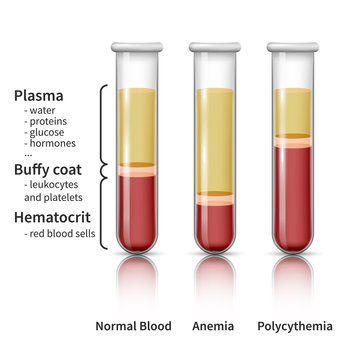Hemoconcentration of a venous blood sample is most often caused when:
The site is prepped with povidone iodine.
The tourniquet is in place for more than 2 minutes.
The specimen is not refrigerated within 30 minutes.
The needle is removed before the tourniquet.
The Correct Answer is B
Choice A Reason:
Prepping the site with povidone iodine is not typically associated with hemoconcentration. Povidone iodine is used as an antiseptic to clean the skin before venipuncture to prevent infection. While it's important to allow it to dry to avoid sample contamination, it does not cause hemoconcentration.
Choice B Reason:
Leaving the tourniquet in place for more than 2 minutes can lead to hemoconcentration. A tourniquet is applied to engorge the veins, making them easier to puncture. However, prolonged application can result in fluid being forced out of the vein into the tissue, increasing the concentration of cells and larger molecules in the blood. This can affect certain laboratory test results by artificially increasing the levels of cellular components.
Choice C Reason:
Not refrigerating the specimen within 30 minutes does not cause hemoconcentration. However, it can affect the stability of certain analytes in the blood sample. Refrigeration is necessary for preserving the integrity of certain components of the blood until analysis, but it is unrelated to the concentration of cells within the sample at the time of collection.
Choice D Reason:
Removing the needle before the tourniquet is released does not cause hemoconcentration. This action might lead to other complications, such as hematoma formation, but it does not affect the concentration of cellular elements in the collected sample.

Nursing Test Bank
Naxlex Comprehensive Predictor Exams
Related Questions
Correct Answer is A
Explanation
Choice A reason:
A 23-gauge needle is commonly used for venipuncture with a winged infusion set and a small volume syringe like a 5 mL syringe. This size provides a balance between patient comfort and the ease of drawing blood without causing hemolysis or excessive damage to blood cells. It is large enough to allow blood to flow easily into the syringe but small enough to minimize discomfort and the risk of bruising.
Choice B reason:
An 18-gauge needle is quite large and is typically used for situations requiring rapid administration of fluids or for blood donation where larger volumes are collected quickly. It is not ideal for a standard venipuncture, especially with a small syringe, as it can cause more pain and increase the risk of bruising.
Choice C reason:
A 25-gauge needle is on the smaller side and may be used for patients with very fragile veins or for pediatric patients. However, it may not be the best choice for a 5 mL syringe as it could make the blood draw process slower and more difficult, potentially leading to clotting in the needle or syringe.
Choice D reason:
A 27-gauge needle is very small and is typically used for subcutaneous injections, such as insulin injections, rather than for venipuncture. It would be too small for an efficient blood draw with a 5 mL syringe, as it would likely cause the blood to hemolyze or clot before the draw is completed.
Correct Answer is C
Explanation
Choice A reason:
A specimen bag is typically used for transporting specimens from the collection site to the laboratory. It is not designed for the disposal of contaminated items such as microscope slides. These bags are not puncture-resistant and do not provide the necessary protection against sharps injuries or contamination.
Choice B reason:
A biohazard bag is used for disposing of items that have been contaminated with potentially infectious materials. While it is suitable for materials like gloves, tissues, or any other items that do not have sharp edges, it is not the appropriate choice for glass slides, which can puncture the bag and pose a risk to handlers.
Choice C reason:
A red sharps container is specifically designed for the disposal of sharps waste, which includes any device that can puncture or cut skin, such as needles, syringes, lancets, and contaminated glass such as microscope slides. These containers are rigid, puncture-resistant, leak-proof, and usually marked with a biohazard symbol, making them the correct choice for disposing of contaminated microscope slides.
Choice D reason:
A medical waste container is a broad term that can refer to various types of containers used for medical waste. However, not all medical waste containers are suitable for sharps disposal. Unless the medical waste container is designed like a red sharps container, it may not be safe for disposing of glass slides.
Whether you are a student looking to ace your exams or a practicing nurse seeking to enhance your expertise , our nursing education contents will empower you with the confidence and competence to make a difference in the lives of patients and become a respected leader in the healthcare field.
Visit Naxlex, invest in your future and unlock endless possibilities with our unparalleled nursing education contents today
Report Wrong Answer on the Current Question
Do you disagree with the answer? If yes, what is your expected answer? Explain.
Kindly be descriptive with the issue you are facing.
